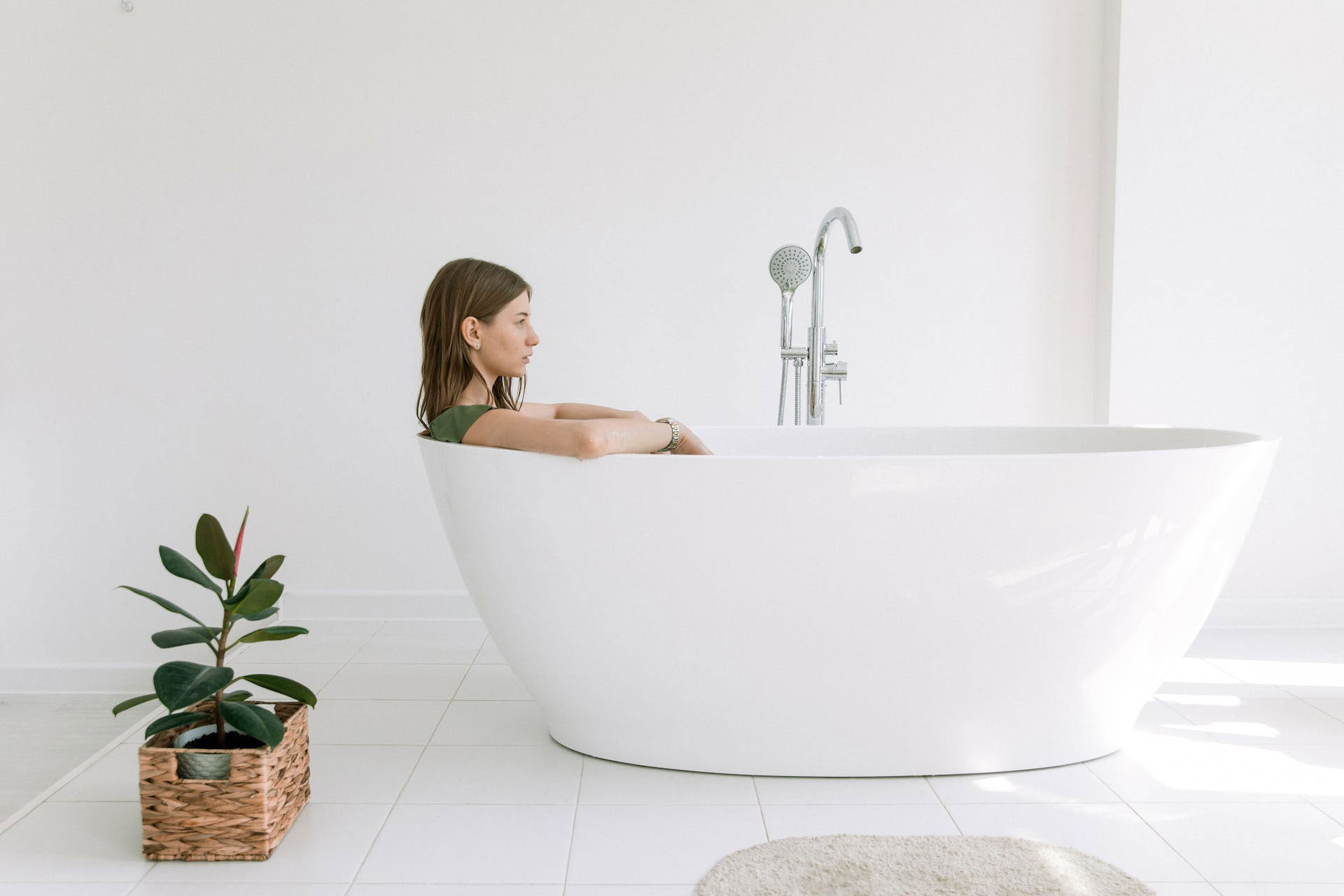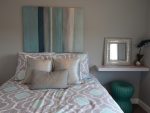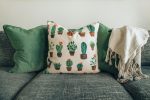Creative design tips you will get only from experts
In the realm of creative design, success is often differentiated by a keen eye for detail and the ability to blend innovation with practical application. Having just the right balance of creativity and practicality is no easy feat, and it’s something that designers have been struggling with for decades. However, certain tips and tricks have emerged over the years from seasoned design experts. These tips span a range of topics, from colour theory to typography to user experience, and they can help elevate your designs to new heights. Here are some creative design tips that you can only find from the minds of experts.

Unveiling the Art of creative interior design
Interior design is not just about aesthetics; it’s also about creating a space that enhances one’s quality of life. Experts in this field recommend incorporating elements of your own personality into the design to make the space truly feel like home. Remember, less is often more — a clutter-free, minimalistic design can make your space appear larger and more inviting. Using mirrors strategically can also amplify natural light and add depth to your room. Consider the function of each room and choose colour schemes and furniture accordingly. For instance, tranquil hues of blue or green are ideal for bedrooms, promoting a sense of relaxation and tranquillity. Above all, be open to experimentation and don’t be afraid to break traditional design rules.
Elevating the aesthetics of your bathroom with the right sink taps
Design isn’t just about creating visually appealing products; it’s also about improving functionality and enhancing our daily lives. This applies to all areas of design, including interior design. A commonly overlooked aspect of interior design is the bathroom sink taps, a seemingly minor detail. However, choosing the right sink taps requires a thoughtful blend of design and functionality. From a design perspective, the taps should complement the overall style of the bathroom. Whether you’re aiming for a minimalist, modern look or a more traditional, classic aesthetic, there are tap designs available to match. Additionally, the finish of the taps can make a significant difference. Chrome, for example, gives a sleek, contemporary touch, while brushed nickel or bronze suggests a more rustic charm.
Consider the ease of use on the functionality front, especially for children or elderly individuals. The taps should also have a high-quality build to ensure they stand up to daily use. Lever handles, for example, are easy to turn, making them a good choice for a wide range of users.
Implementing the influence of texture by using concrete in your designs
Concrete may not be the first thing that comes to mind when considering materials in design. However, this versatile material has been gaining popularity in interior design for its unique texture and durability. Design experts suggest using concrete as a focal point in a room, whether it’s through flooring or statement pieces like tables or wall art. The rough texture of concrete can add an element of rustic charm, or it can be polished for a sleek and modern look. Additionally, concrete can be mixed with different materials, such as wood or metal, to create interesting and unexpected designs. When considering incorporating concrete into your designs, think about its placement and how it will interact with other elements in the room.
A good idea when working with concrete is to balance its rough texture with softer elements, such as cosy rugs or plush cushions. This creates a harmonious contrast and adds depth to the overall design. Other elements like lighting can also have a significant impact on how concrete is perceived in a space. Soft, warm lighting can soften the harshness of concrete, while cool, white lighting can highlight its unique texture.
If you want a quick and easy way to replicate the sleek, industrial feel of concrete flooring throughout the home, you might instead decide to opt for concrete-effect vinyl flooring, or a stone-plastic composite with the same level of texturing and detail. This will prove a lot more DIY-friendly and also cost-effective.
Utilising the power of plants for a natural touch in your interior designs
In the sphere of interior design, incorporating plants can significantly enhance the aesthetics of any space. Plants add a touch of natural elegance and can instantly enliven a room with their vibrant colours and unique textures. They also serve a functional purpose by improving air quality and promoting a sense of wellness. Select plants that are suited to the lighting conditions of your room and arrange them in attractive pots that align with your design scheme. Remember to consider scale and proportion when decorating with plants; a large indoor tree can serve as a stunning focal point, while smaller plants can add interest to shelves and tables.
Before purchasing and arranging plants in a room, you can make use of digital tools to design the layout. This not only saves time and money but also provides a clear visualisation of how the layout will appear once implemented.
Harnessing the impact of lighting on your design aesthetic
Lighting plays a crucial role in interior design, exerting a profound impact on both the atmosphere and mood of a space. Beyond its practical function of providing illumination, creative lighting choices can accentuate or diminish certain elements, create an illusion of spaciousness, and infuse a room with a warm and inviting ambience. Experts in design recommend employing a layered approach to lighting, combining ambient, task, and accent lighting to achieve a harmonious and adaptable lighting scheme. It’s important to consider the type of light bulbs utilised as well, as warmer tones can foster a cosy and tranquil environment, while cooler tones can invigorate and enliven a space. Additionally, the selection of fixtures should harmonise with the room’s overall style, whether it be modern, traditional, or a fusion of both. By experimenting with various sources and styles of lighting, designers can unlock unexpected and striking outcomes, making it an indispensable tool in their creative arsenal.
Mastering the art of creative design involves much more than meets the eye. A designer’s palette comprises not just colours and shapes but also an understanding of the functionality, an appreciation for detail, and a deep-seated knowledge of materials and their applications. Be it the strategic placement of mirrors, the selection of sink taps, the innovative use of concrete, the subtle influence of plants, or the transformative power of lighting — every seemingly minor element plays a part in the grand symphony of design. It’s a continuous journey of learning and experimenting with endless possibilities. So, take these expert tips and make them your own. Every space you design is an expression of you, a testament to your creativity and individuality. Let it tell your unique story.
![[AD] We went to the newly opened Cha Sha Kingston a couple of weeks ago, and wow — taste bud adventure unlocked! The boys devoured the masala fries and chicken tikka rolls, while we couldn’t get enough of that epic kebab butter curry 😍🍛.
It’s amazing value for food this tasty (and everyone left happy and VERY full!).
Delicious food, vibrant vibes and incredible value — the perfect combo for your next meal.
📍Cha Sha Kingston
43 Surbiton Road, KT1 2HG
🌐 chasha.co.uk
Other Cha Sha locations in Birmingham, Ilford, Southampton and Wembkey
#ChaSha #ChaShaKingston #KingstonEats #FoodieFinds #UKFoodie #FoodReview #KingstonUponThames #FamilyEats #FamilyDining #FoodieKids](https://suburban-mum.com/wp-content/uploads/2016/02/574770541_18560351146016840_6855048070839528040_n-180x320.jpg)

![[AD] We’re a cricket-mad family, so we’re buzzing that @thehundred is back this August! 🏏🔥
To get ready, M tried out the official FREE Activity Pack — and it’s brilliant! 🙌
Packed with fun games, creative challenges and sporty tasks, it’s perfect for getting kids hyped whether you’re at home or on the go.
👉Download yours now (link in bio)
@londonspirit @ovalinvincibles #EveryMomentCounts #TheHundred
#EnglandCricket #CricketFamily #TheHundredCricket #LondonBloggers #Cricket #CricketIsLife #kidsfun](https://suburban-mum.com/wp-content/uploads/2022/11/505472555_18531279601016840_7092520074819907569_n-180x320.jpg)



![[AD - Press visit]
We enjoyed the glorious sunshine this weekend with a trip to Brighton. We went on the @brightoni360official which is right by the sea front.
The i360 pod take a slow journey up, allowing you to take in views across Brighton and the South Downs 450ft above ground. There’s a bar inside with drinks and snacks available to purchase and the experience lasts 25 minutes.
Afterwards, we headed to the open air roller rink for a roller skating session!
The roller rink is:
⭐ Suitable for over 5s
⭐ £6.50 if you have your own skates or £9.50 if you need to hire them
⭐ 45 minutes per session
Full details to visit the i360 + skating
📍 Brighton i360, Lower Kings Road, Brighton BN1 2LN
🚗 Parking nearby (we parked in the Regency Square Car park)
🎟️ Prices start from £25.40 for an adult and £16.90 for a child
🕐 Opening hours are currently Sun-Fri 10.30am-18.30pm and until 19.30pm on Saturdays
☕️ Bar inside the i360, cafe and gift shop
Book tickets here:
https://tickets.brightoni360.co.uk/tickets/?_ga=2.195305772.1869001490.1689671753-1757164059.1689671753/#events?eventid=157](https://suburban-mum.com/wp-content/uploads/2015/04/417980235_313576471048632_3682382982231216432_n.jpg)

![[AD] ***Summer of fun at Barracudas Activity Camps!****
There is plenty for kids to do at @barracudas_activity_day_camps
From Tennis, Archery, Swimming, Motor Sports and more you can be sure that there will be something for kids aged 4.5-14. ⚽🏈🥅🎾🏓🏎️🏹🏊♂️🏉
You can book on a day by day basis - so it can fit in with any other days out/activities you have planned and there are early drop off and late pickup options available. Barracudas are also Ofsted registered so you can use your Childcare Vouchers too.
⭐⭐⭐Get £20 off a week or £4 off a day using my discount code: MARIA20⭐⭐⭐
#BarracudasActivityDayCamp #BarracudasActivityCamp #BarracudaAmbassadors #SummerHolidays #SchoolHolidays #Summer2023 #SummerCamp #DayCare #Camp #KidsCamp #surreymummy #surreymums #SummerOfFun #ActivityCamps #HolidayCamps #Childcare #SchoolHolidays #schoolholidaycamps](https://suburban-mum.com/wp-content/uploads/2024/07/353583570_625625966167953_545896259645102575_n.jpg)



![[AD] We have some super exciting news...we have been chosen to be Laser Quest Ambassadors, and the boys are over the moon!
We are really lucky that our local Laser Quest (@laserquestkingston) is just around the corner from us. It means we can pop in of a weekend or anytime during the school holidays, and with summer just around the corner, I know Laser Quest will be one of our go-to places for some family fun.
As well as games of Laser Quest, there are also VR experiences and arcade amusements too. To find out a bit more about how Laser Quest works, you can read my blog post: https://www.suburban-mum.com/laser-quest-kingston/ (clickable link in bio)
Don't forget to keep an eye out for our Laser Quest posts - I'm going to be giving away two family passes to use at Laserquest Kingston!
If you can't wait and want to head down to Laser Quest to try it out, use the code SUMMER30 for 30% off your booking. The code is valid from now until the end of August 2023 and can be used on Laser Quest games and birthday party bookings.
#LaserquestAmbassador #Laserquest #LaserquestKingston #ActivitiesForKids #FamilyFun #DaysOutWithKids #Lasertag #LaserquestVR #Kingston #ThingsToDoInKingston #SurreyFamilyDaysOut #ThingsToDoWithKids #RainyDayFun #SurreyMummy #SurreyLife #LifeWithKids #LifeWithBoys #familyfunday](https://suburban-mum.com/wp-content/uploads/2015/04/353230107_797358078406942_2405522556733455165_n.jpg)

![[AD] The sun has finally made an appearance and the boys have been making the most of it by spending it
in the garden.
They’re go-to is always football and they’ve been trying to improve their aim and accuracy with the new Messi Foldable Footlball goal from the #MessiTrainingSystem range.
I love the fact the goal is foldable, making it easy to store away when not in use. It is also lightweight so you can effortlessly pack it up and take it to the park or to a friend’s house.
The Messi Foldable Football Goal retails at £36 and can be purchased from @argos
You can read my full review here: https://www.suburban-mum.com/messi-foldable-football-goal/
#TrainLikeMessi #FoldableFootballGoal #FootballSkills #OutdoorFun #LionelMessi #LeoMessi #FootballAtHome #OutdoorKids #JustGetOutside #OutdoorsAndFree #ScreenFreeKids #WhateverTheWeatherKids @flair_gp](https://suburban-mum.com/wp-content/uploads/2015/04/341194882_615024710178056_41977149395989448_n.jpg)

![[AD] We are absolutely thrilled to announce that we are Barracuda Ambassadors again this year.
With Easter just around the corner, the boys were sent the @barracudas_activity_day_camps new camp kit in preparation for the school holidays.
There’s a wide range of activities for kids aged 4.5 - 14 including Tennis, Archery, Basketball, Arts & Crafts and more.
If you like the sound of Barracudas, find out more over on their website. You can also save £20 a week or £4 a day, using my discount code: MARIA20](https://suburban-mum.com/wp-content/uploads/2024/07/336812306_765234558514317_685553691647241974_n.jpg)


![[AD - Gifted]
Last weekend we were invited to try out @tsarettaspice’s new Bottomless Brunch menu and I can tell you it was thumbs up all round!
There’s a good choice tapas on offer from Punjabi fish fingers, Indo Chinese Chicken to Spiced Lamb Scotch Eggs and Manchurian Cauliflower (which was amazing!)
If you’re local to Twickenham and fancy giving them a try here’s are the details.
Tsaretta Spice Bottomless Brunch
⭐️£37.50 per head for bottomless Prosecco or cocktail of the day
⭐️£55 per head for bottomless Champagne
⭐️ Food included: 4 tapas selections and dessert or 2 tapas selections, a pav or naanwich and dessert
⭐️ Non-alcohol brunch is also available
Tsaretta Spice
55 Church Street
Twickenham
TW1 3NR
You can also read our full review over on the blog (link in bio)](https://suburban-mum.com/wp-content/uploads/2024/07/334565436_5960402314015030_663031098700829518_n.jpg)



